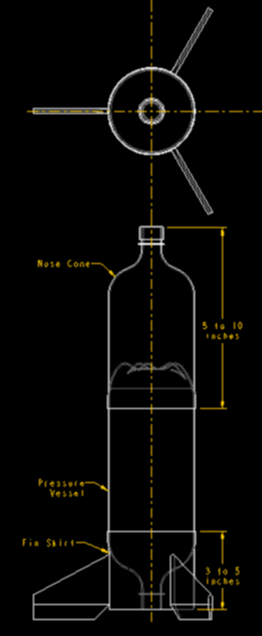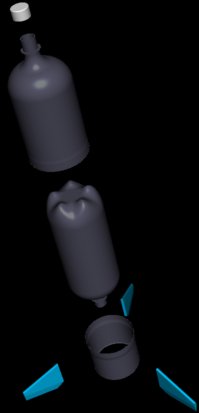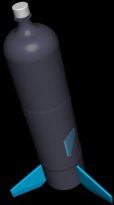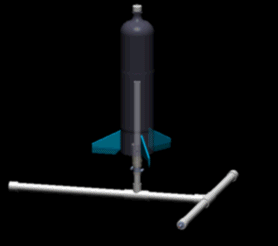 |
Other considerations would include ballasting and a recovery system.
With ballasting, you want to move the CG (center of gravity) forward of
the CP (center of pressure) to keep the rocket stable during free flight.
A good rule of thumb is to keep the CG one body diameter forward of the
CP. The fins move the CP aft and ballast moves the CG forward.
You need to work with each to get a stable rocket with minimum frontal
area (small fins) and the lightest weight (little or no ballast).
A simple method of estimating the CP would be to lay the finished rocket
with fins on a piece of sturdy cardboard and trace it's silhouette from
a point light source. Cut out the silhouette, and the distance of
it's balance point from the nose or tail, is very close to the CP location
on your rocket from the nose or tail. The CG can be found by holding
the rocket with the index fingers of each hand on either side of the rocket
body.
One of most obvious, and simple, recovery systems is the parachute.
The easiest way to include this is to attach a simple one to the bottle
cap at the nose and drape it over the rocket. During boost and coast
to apogee, the dynamic pressure of the air will keep the parachute in place.
The hope is that while dropping back toward earth, air will pick up the
edges of the chute and deploy it. Of course, for this to work, the
rocket has to fly straight up and drop straight down, tail first, for a
few feet for the air to catch and deploy the chute. If the rocket
is launched at any angle other than a right angle to the ground, the rocket
will always have forward velocity in it's parabolic flight path and it's
unlikely that the chute will be deployed. There are lots of cleverly
complicated methods of deploying a parachute from water rockets, and it
is quite interesting to surf around and see some of the ideas that WaterRocketeers
have come up with. Folding glider wings, gyro-copter blades, hang
glider type wings, etc., are other recovery devices that could be used. |



